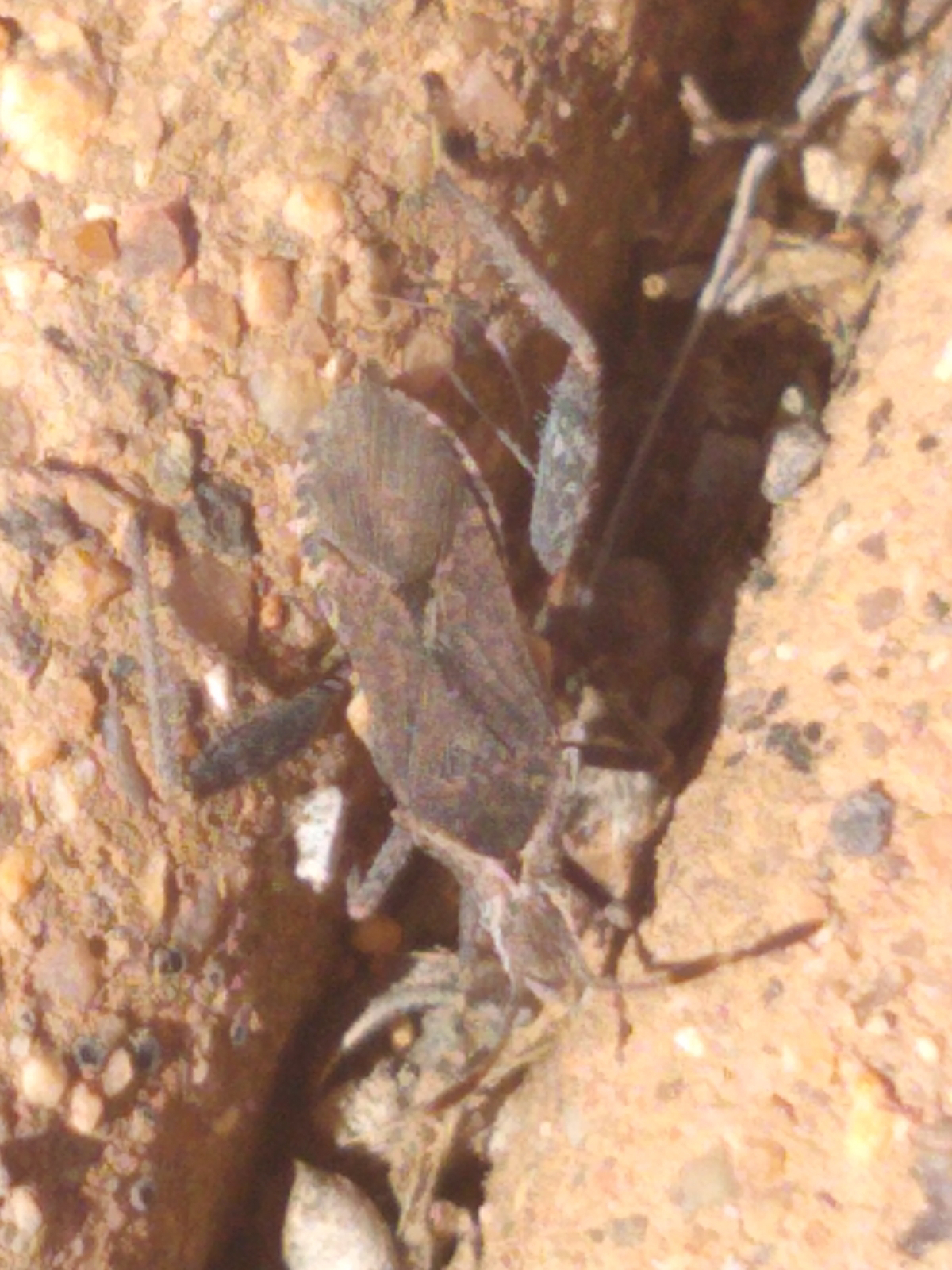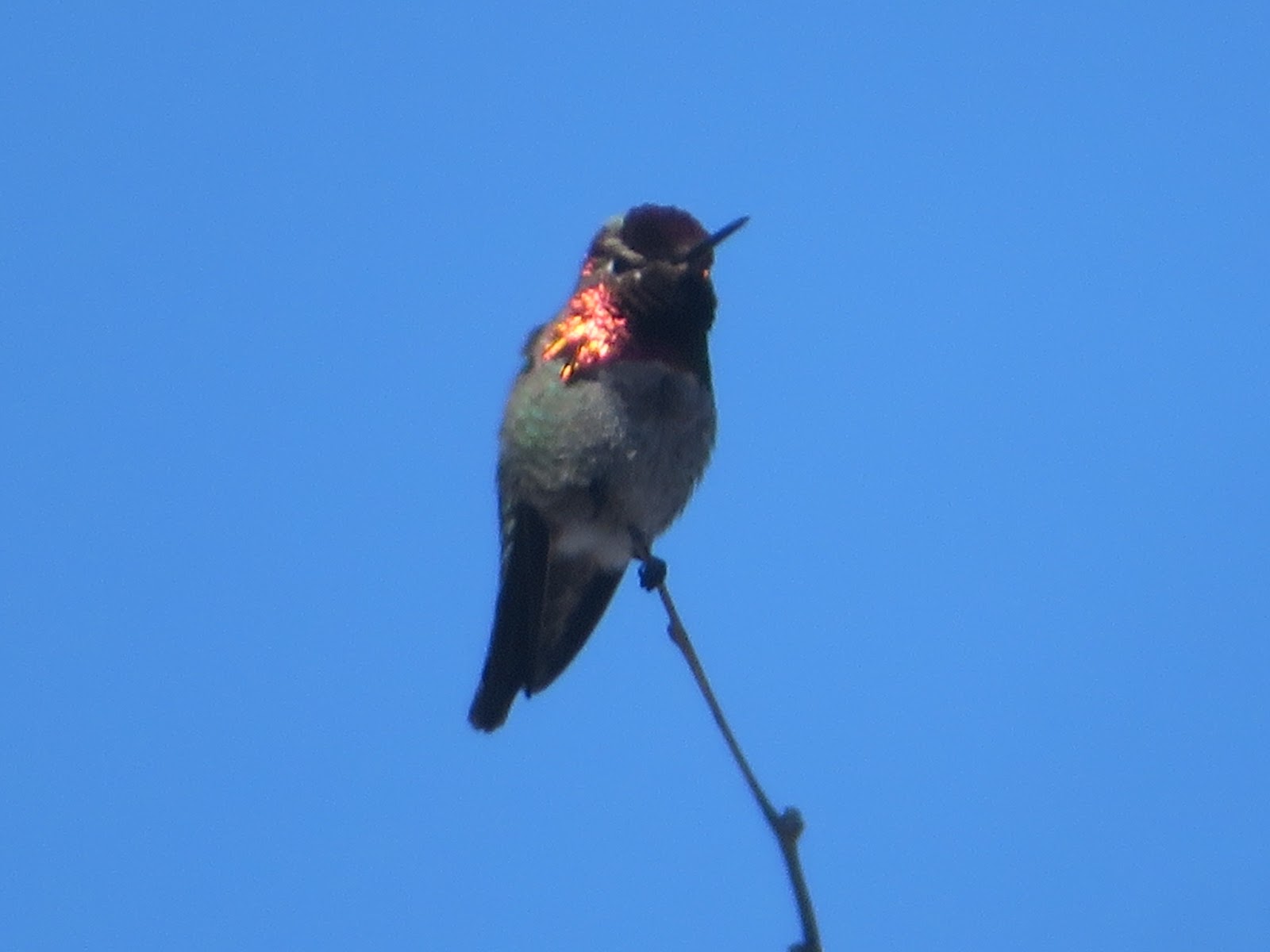I know from experience that this long snouted bug is a weevil, a beetle, insect that is an invertebrate. But I have never seen one like this guy. Familiar yet strange (genus Scaphomorphus).
It is also odd to find familiar plants in strange places. This is a currant bush at the bottom of the path into Montezuma Wells monument in Arizona. It's blooming here while the bushes in Corrales are under snow!
This is a cinnamon teal duck migrating through, but taking a break at the spring in the middle of the desert near Rimrock, AZ. The beak is muddy as it digs for amphipods in the alkaline mud. They are also rare visitors to the Corrales ditches during the summer.
I have not found any male red wing blackbirds in Corrales yet, but by listening for the distinctive call, I was able to get a quick photo in Arizona, not showing those namesake red patches, though.
Cliff swallows have begun repairing and building their nests under bridges and cave cracks. This picture was at Montezuma Castle in AZ, but they can be found anywhere there is a cliff.
Coreinae genus, no idea what this weird bug is. It is a pretty big true big, maybe a leaf foot, but was up in the desert, not hiding in leaf litter.
This is a darkling beetle, usually they are in the open desert areas, but it is not unusual to find them in forests. The juvenile beetles grow up hiding in the leaf litter.
We found a few of these very distinctive plant seeds. This is devil claw, a classically Arizona plant that wraps around hooves to travel and scatter seeds.
The air temperature is still cool, so small reptiles bask in the sun to be able to hunt insects, just like small lizards everywhere.
At the edge of the marsh there was this mesquite with deep grass. There was evidence of deer and javelina on the ground. In Corrales, this space should have been willows. This area has been managed until recently with fire, I wonder if that's why no willows?
Some things do not change, here a beaver is trying to figure out how to get to tasty leaves. I think it took on more than it could handle and went looking for smaller trees.
With no more clearing, the cattails quickly take over, especially if the water level is constant. Beavers have opened spots in this thick growth, creating new ecosystems for many other animals.
This is a recent migrant; an Anna's hummingbird male claiming territory, using stink-eye and a lot of noise. Migration maps show many birds heading north right now as temperatures rise. I don't think they are in central NM yet.
Marsh areas and groundwater are vital to wildlife in the southwest and far too rare to treat as an afterthought by land managers. While the science of urban planning is well developed, developing land use for wetlands in the west seems to be in the toddler stage. It probably will stay that way until people can relate to the value of "unproductive" land. In that sense, the past also predicts the future, unfortunately for the environment and maybe people too, based on the ruins dotted all over the southwest.














No comments:
Post a Comment